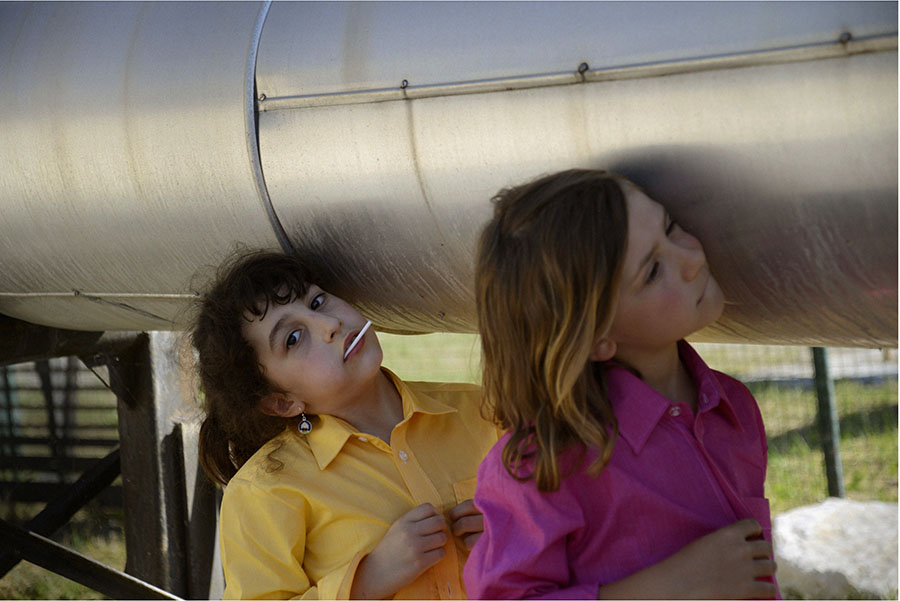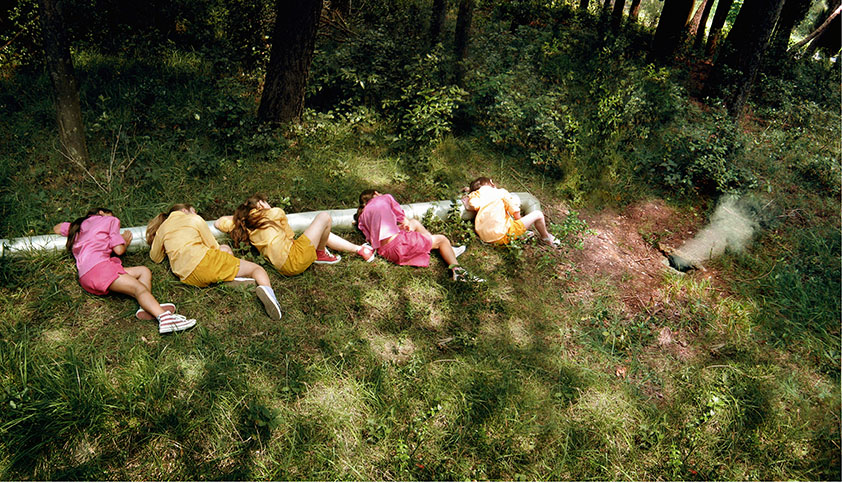| |
CHILDREN OF UNQUIET | MIKHAIL KARIKIS
19 ª Biennale of Sydney
Children of Unquiet | Mikhail Karikis
Children of Unquiet is a new project by Mikhail Karikis that takes place in the geothermal area of the Devil’s Valley in Tuscany, Italy. Known for its legendry association with Dante’s Inferno, this is the very location where sustainable energy production was invented in the early 1900s and where the first geothermal power station in the world was built. Until recently, five thousand workers and their families lived there in a group of iconic modernist industrial villages constructed around the power station. Following the introduction of automated and remote operation technologies in the industry, unemployment increased and prospects for the young became limited resulting in the rapid depopulation or abandonment of entire villages.
Children of Unquiet
Mikhail Karikis
Children of Unquiet is a new project by Mikhail Karikis that takes place in the geothermal area of the Devil’s Valley in Tuscany, Italy. Known for its legendry association with Dante’s Inferno, this is the very location where sustainable energy production was invented in the early 1900s and where the first geothermal power station in the world was built. Until recently, five thousand workers and their families lived there in a group of iconic modernist industrial villages constructed around the power station. Following the introduction of automated and remote operation technologies in the industry, unemployment increased and prospects for the young became limited resulting in the rapid depopulation or abandonment of entire villages.
It is within this intricate natural, historical and socio-economic context that Mikhail Karikis developed the project Children of Unquiet in collaboration with children from the region over a period of eighteen months.
At the centre of the project is his homonymous film, which orchestrates a children’s “take-over” of a deserted workers’ village and its adjacent industrial and natural locations. The film features youngsters of five to twelve years of age who seize the depopulated sites by transforming the scorching vaporous wasteland into a playground; gathering among the ruins to read about love and the industriousness of bees; and coming together to sing and whistle the roaring geothermal sounds of geysers, the incessant hum of factory drones and the unremitting hiss of steam erupting from the earth that form the soundscape of their childhood.
Accompanying the film, a photographic series and a Super 8 film capture the children’s visions of the future of their homes in the deserted villages as they depict them in a series of futurological drawings and urban plans generated in workshops with the artist. In addition, the project features a sound work entitled 102 Years Out of Synch, which traces the site’s legendary, literary and cinematic connections with the Inferno and the sonic imaginary of Hell, as well as a new board game designed by the artist to activate decision-making processes, dilemmas and conflicts that echo the conflicting narratives of the social-economic preoccupations at the site.
In Children of Unquiet a desolate post-industrial site exudes new potential unleashed out of the ruins by a community of children. Their “take-over” through play and song, and their speculative urban and architectural interventions generate the opportunity for individual and communal expression, asserting the younger generation’s connection with the site of their childhood. By challenging narratives of a failed human project and obligatory migration that dominate them, they evoke different possible, desired or imagined futures.
Artist’s Biography
Mikhail Karikis is a Greek-born and London-based artist whose practice emerges from his ongoing exploration of the role of sound and the human voice in creating a sense of collectivity that shapes people’s lives and professional identities, and challenges dominant political and cultural conventions. Karikis has exhibited at 19th Biennale of Sydney (2014); Assembly, Tate Britain (2014); Aichi Triennale, Japan (2013); Manifesta 9, Belgium (2012); Danish Pavilion, 54th Venice Biennale (2011).
|
|


|